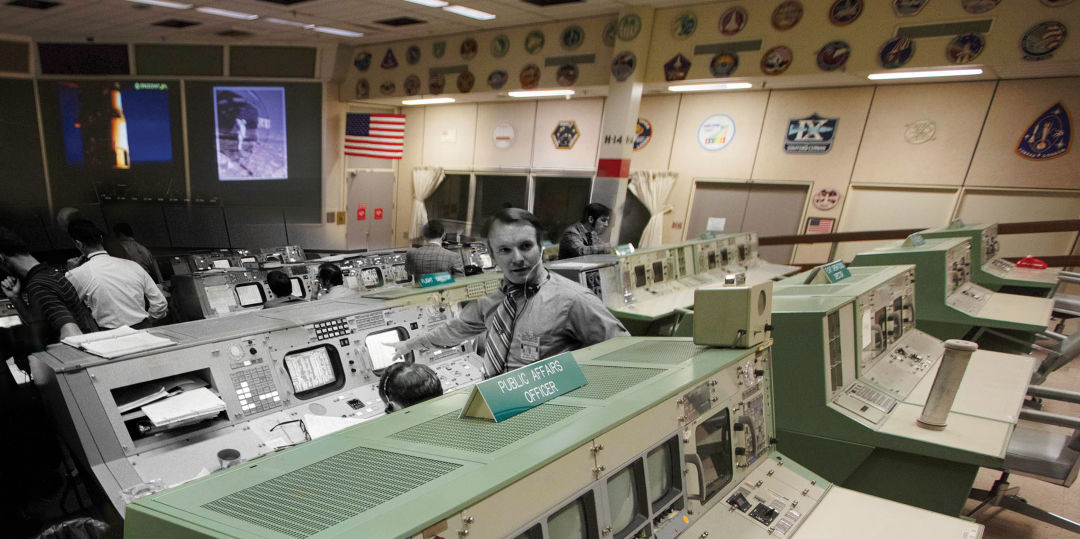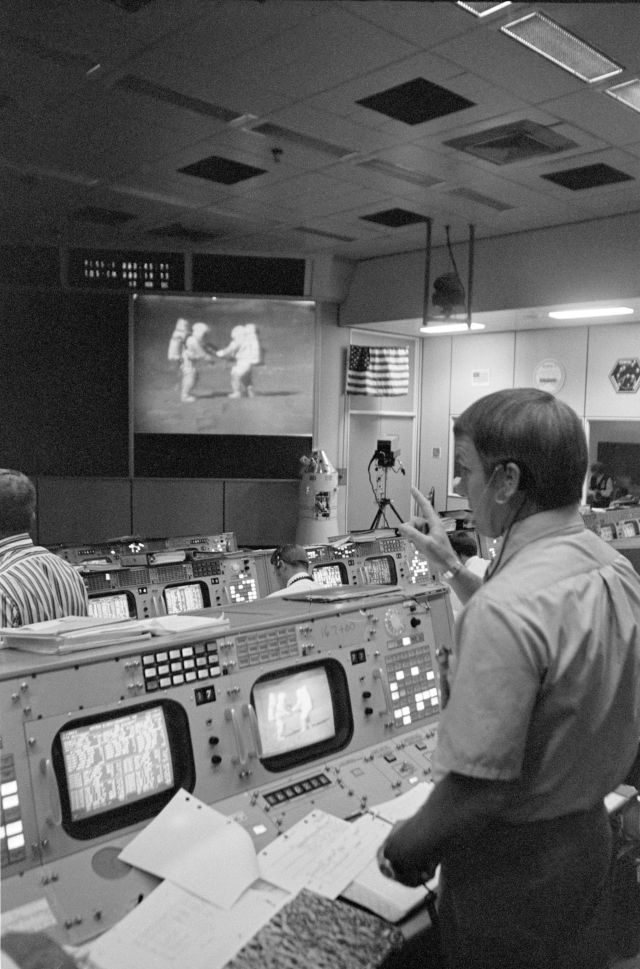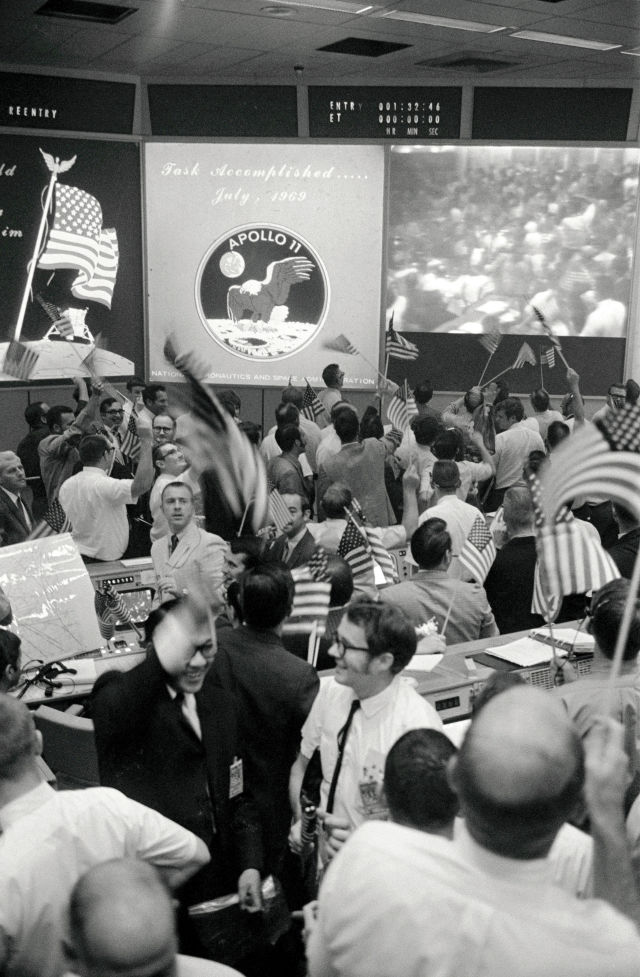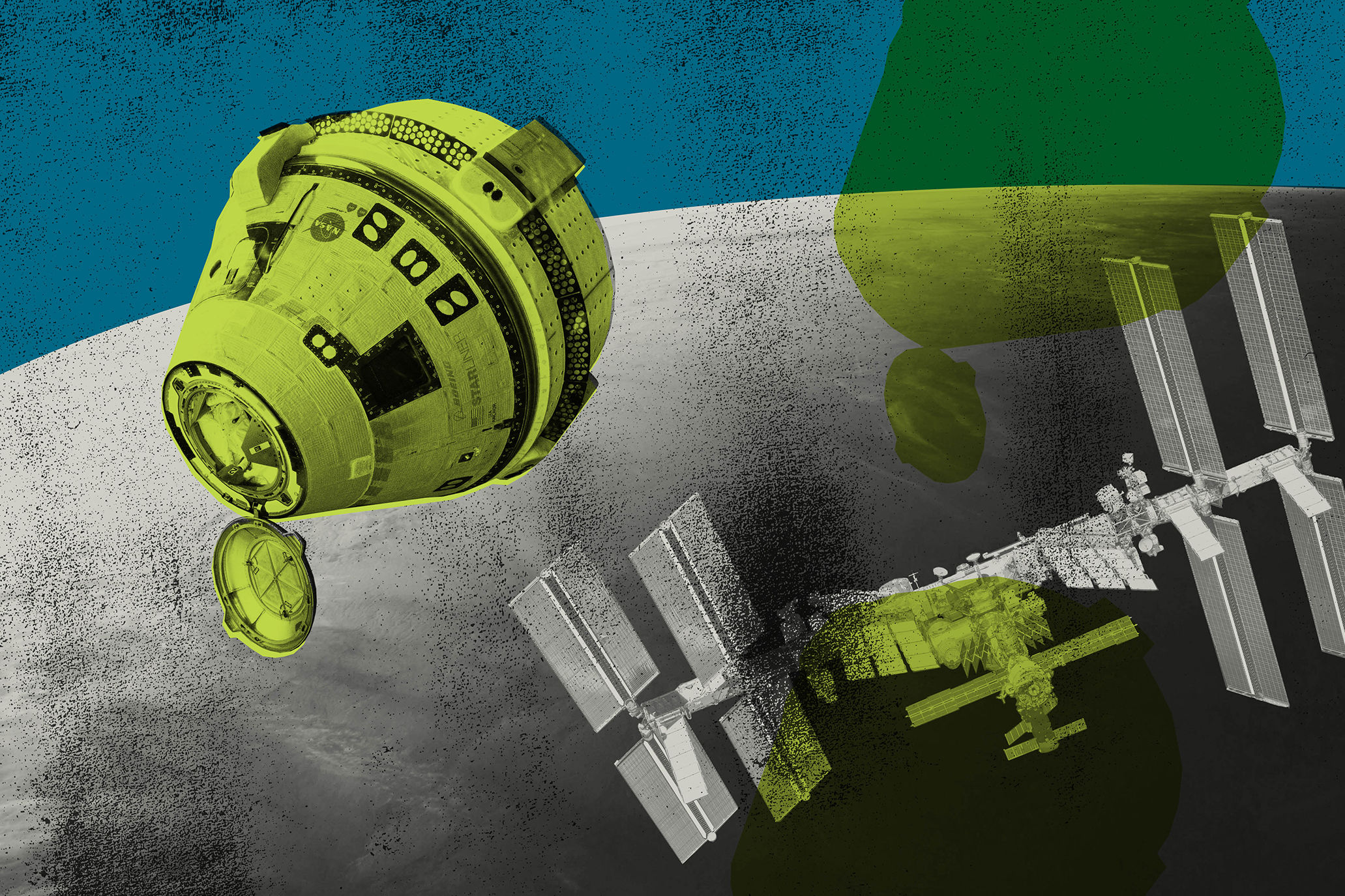You Can Now Walk Around the Apollo Mission Control Room at Space Center Houston

Photo illustration of Mission Control in its heyday (black and white) and the room before renovations (color).
Image: Photo Illustration/NASA
July, 1969: It was a smoky, high-tech-for-the-time room, full of buzzcut men, and exactly one woman, puffing away and gulping coffee. There, in Mission Operations Control Room 2—or “Houston,” as the callsign went—the team worked together to ensure that the Apollo 11 astronauts completed their mission and came back to Earth intact.
“This was a place where amazing things happened,” says William Harris, president and CEO of Space Center Houston. “It’s a human story. In this room people did incredible things. The room itself was remarkable. Nothing like it had ever been built before. Everyone knew how important it was.”
And yet by 2017 the historic site had been listed as “threatened” by the National Park Service, the victim of unlimited visitor access and a dearth of preservation funds. The famed state-of-the-art devices that had allowed Houston to speak with the Apollo 11 crew across 200,000-plus miles were missing knobs and buttons; the carpet was held together with tape; and, through the flickering lights, you could see the thin layer of dust coating the entire space.

Image: NASA
“I’m sure it was frustrating,” Harris says. “Alumni who worked in flight control during the Apollo era had been advocating for years to do something about the state of the room, but the priority at Johnson Space Center is the current missions, the future missions, not preserving the past.”
Finally, in 2017 Space Center Houston—the nonprofit science center and official visitors’ center for the JSC—stepped in to save the day. The group secured $3.1 million from the town of Webster near the JSC, launched a successful $5 million Kickstarter campaign, and convened an advisory committee of former employees to assist in the restoration of the place now known as the Apollo Mission Control Room.
There were challenges, of course. Because the room served as the official nerve center for each NASA mission from Gemini IV in 1965 all the way through the shuttle program in the 1990s, over time the original consoles and other machines had been replaced as they wore out and technology advanced. The preservation of the surviving equipment, performed by SpaceWorks—part of Cosmosphere, the space museum in Hutchinson, Kansas—began early last year.
As for the decor, some original items did survive, like the “ballistic orange” polyester chair covers that just needed a good cleaning. “The seats look like new now,” says Harris. Others—carpets, wallpaper, ashtrays, and coffee mugs, among them—proved possible to find based on countless photos, videos, and documentation from decades ago. “One of the great things about NASA is they have incredible visual documentation,” Harris says. “There is a NASA historian who can tell you down to what button was put in or taken out, and when, and why.”

Image: NASA
There were lucky moments during the effort, like a random call about the control buttons for the consoles, which were proving difficult to re-create. “Our curator got a call from someone who said, ‘Hey, my dad used to work at the factory that made the buttons for the consoles, and I found a whole bag full of them if you need them,’” Harris says. “It was great, because we really did need them. People came out of the woodwork from all over the place to give us items from that time that they thought would help.”
In fact, after the team placed a box in the foyer of one of the main NASA buildings, with a simple request that employees return any Apollo-era stuff, no questions asked, they were surprised by just how much memorabilia materialized. “We got a lot of items back this way,” Harris says, “more than you would have expected.”
And so, as of this month, just in time for Apollo 11’s 50th anniversary, the place looks exactly as it did on July 20, 1969, when Neil Armstrong touched down on the moon and the crew pulled out cigars to celebrate. “Stepping into the observation room,” Harris says, “will be just like stepping back in time.”
The newly restored Apollo Mission Control Room will be part of Space Center Houston’s tram tour, included with general admission.




